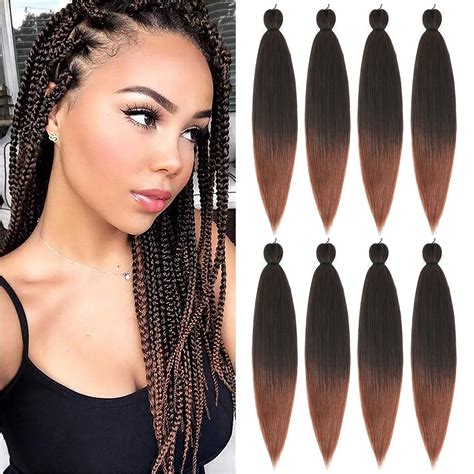Introduction
Braiding hair is a versatile and stylish option for those looking to add length, volume, or color to their natural hair. 1b 30 braiding hair is a popular choice for those with dark brown or black hair, as it closely matches the natural hair color and provides a seamless blend. In this comprehensive guide, we will explore everything you need to know about 1b 30 braiding hair, from choosing the right type to installing, styling, and maintaining your new braids.

Choosing the Right 1b 30 Braiding Hair
The first step in getting the perfect 1b 30 braiding hair is choosing the right type. There are several factors to consider, including the length, texture, and quality of the hair.
Length
The length of your braiding hair will depend on the desired style. Shorter lengths are ideal for bobs, braids, and cornrows, while longer lengths can be used for box braids, dreadlocks, and extensions.
Texture
Braiding hair comes in a variety of textures, including straight, wavy, and curly. Straight hair is the most common type of braiding hair and is suitable for most braiding styles. Wavy and curly hair can add volume and texture to your braids.
Quality
The quality of braiding hair is determined by the raw materials used and the manufacturing process. Human hair is considered the highest quality braiding hair, as it is strong, durable, and can be treated like natural hair. Synthetic hair is a more affordable option but may not be as durable or versatile as human hair.
Installing 1b 30 Braiding Hair
Once you have chosen the right braiding hair, it is time to install it. This process can be done at home or by a professional.
At-Home Installation
If you are installing your braiding hair at home, you will need the following tools:
- Braiding hair
- Comb
- Scissors
- Thread or elastic bands
- Hair clips
Steps:
- Wash and dry your natural hair.
- Section your hair into small, even squares.
- Use a comb to create a cornrow or braid in the center of each section.
- Attach the braiding hair to the base of the cornrow or braid using thread or elastic bands.
- Braid the braiding hair into your natural hair, using the desired braiding technique.
- Repeat steps 3-5 until all of your hair is braided.
- Seal the ends of the braids with hot water or a braiding sealant.
Professional Installation
If you are having your braiding hair installed by a professional, they will use a similar process to the at-home installation. However, they may use additional tools and techniques to achieve a more polished look.
Styling 1b 30 Braiding Hair
Once your braiding hair is installed, you can style it in a variety of ways. Some popular styling options include:
- Box braids: Box braids are square-shaped braids that are created by parting the hair into small squares and braiding each section.
- Cornrows: Cornrows are thin braids that are created by braiding three strands of hair together.
- Dreadlocks: Dreadlocks are formed by matting and twisting the hair.
- Extensions: Braiding hair can be used to add length and volume to natural hair.
Maintaining 1b 30 Braiding Hair
Proper maintenance is essential to keeping your braiding hair looking its best. Here are some tips:
- Wash your hair regularly: Wash your hair every 1-2 weeks to remove dirt and oil buildup. Use a sulfate-free shampoo and conditioner to avoid damaging the hair.
- Moisturize your hair: Moisturize your hair regularly to keep it hydrated and prevent breakage. Use a leave-in conditioner or hair oil to keep your hair soft and supple.
- Cover your hair at night: Cover your hair with a silk or satin scarf or bonnet to prevent tangles and breakage.
- Avoid heat styling: Heat styling can damage braiding hair, so avoid using hot tools as much as possible.
- Get regular trims: Regular trims will help to remove split ends and keep your hair healthy.
Troubleshooting Common Problems with 1b 30 Braiding Hair
If you are experiencing any problems with your 1b 30 braiding hair, here are some troubleshooting tips:
- Itching: Itching is a common problem with braiding hair. To relieve itching, wash your hair with a clarifying shampoo and use a moisturizer or anti-itch spray.
- Tangling: Tangling can be caused by dry hair or improper care. To prevent tangling, use a detangling comb or brush and moisturize your hair regularly.
- Breakage: Breakage can be caused by heat styling, over-tight braids, or improper care. To prevent breakage, avoid heat styling, braid your hair loosely, and use a leave-in conditioner or hair oil to keep your hair hydrated.
- Matting: Matting can be caused by neglecting to maintain your braids. To prevent matting, wash your hair regularly, moisturize your hair, and cover your hair at night.
Conclusion
1b 30 braiding hair is a versatile and stylish option for those looking to add length, volume, or color to their natural hair. By choosing the right type of braiding hair, installing it properly, styling it creatively, and maintaining it carefully, you can enjoy beautiful, healthy braids for weeks or even months.
